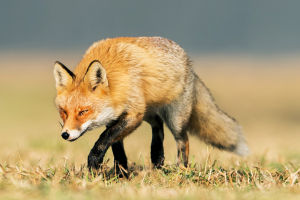The owl, collectively referred to as the order Strigiformes, is a fascinating and mysterious group of birds.
Owls have large eyes, both facing forward, distinguishing them from other bird species.
The arrangement of feathers on their heads forms a facial disk, with some species having ear-like feathers. Their name comes from their broad, flat heads which resemble those of cats.
Owls are enigmatic creatures capable of seeing clearly in the darkness, capturing prey, and emitting loud, eerie calls.
However, why can owls see in the pitch-black night?
Long ago, some believed that owls could see infrared light, which allowed them to see in the dark. However, this idea was refuted by Hecht, who conducted experiments measuring owl pupil responses. He found that even intense infrared light, far beyond what humans can perceive, didn't necessarily cause owl iris constriction, while visible light did.
To explain further, when there is intense daylight, the iris contracts, allowing only a small amount of light to enter the eye. In darkness, the iris expands, allowing more light to enter.
Scientists utilized these pupil responses to measure owls' spectral sensitivity curves, which were found to be similar to humans. Later, Dice conducted behavioral experiments to test if owls could perceive infrared light.
He discovered that owls could accurately locate prey (dead mice) in low light conditions with a certain contrast between the mice and the floor. As the experiments involved dead mice, which neither emitted infrared nor sound, it suggested that owls didn't use infrared or sound to find targets.
Moreover, in similar conditions, human subjects required 10 to 100 times more light to see the mice, leading Dice to conclude that owls have vision sensitivity 10 to 100 times greater than humans.
The eyes of owls are one of their most prominent features—round, large, occupying much of their head space. Large eyes mean large pupils, allowing more light to enter. Additionally, owls' eyes contain many cells sensitive to dim light, enabling them to perceive objects' outlines and movements in darkness. Furthermore, behind their eyes, owls have a reflective layer that can enhance the intensity of incoming light, resulting in the glowing appearance of their eyes in darkness.
Owls not only possess exceptional vision but also remarkable hearing.
Their ears are asymmetrical, differing in shape, size, and position, allowing them to determine the direction and distance of sound sources by comparing the time and intensity of sound reaching each ear.
This ability is particularly useful for hunting small animals in the dark, sometimes allowing owls to detect prey hidden beneath thick layers of snow.
Owls are truly unique and fascinating creatures, possessing astonishing vision, hearing, flight capabilities, and hunting skills. They also exhibit diverse behaviors and cultural significance. It's essential to respect and protect these wise creatures, allowing them to thrive freely in this beautiful and magical world.


